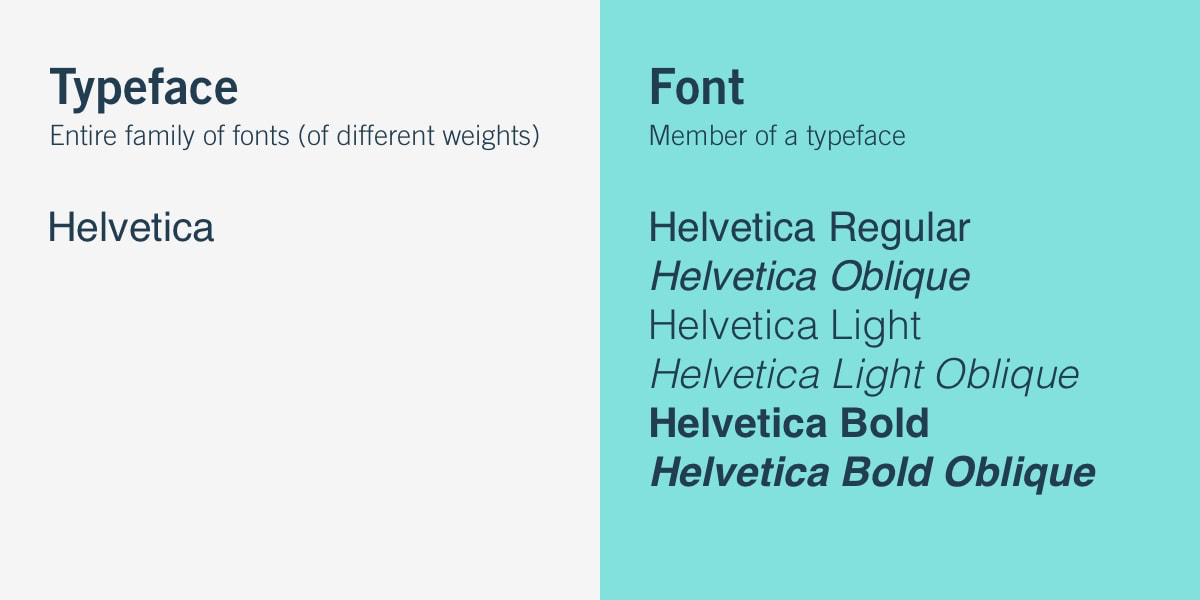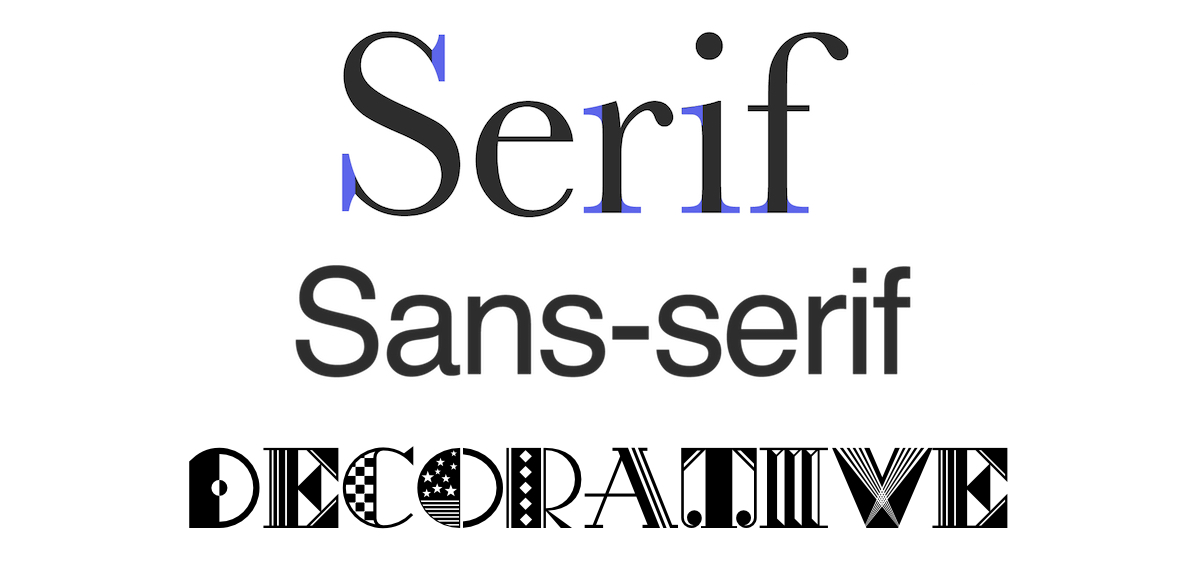 A typeface is a style which comprises of a myriad of characters of varying sizes and weight. (It is different to a font which is a graphical representation of a text character).
A typeface is a style which comprises of a myriad of characters of varying sizes and weight. (It is different to a font which is a graphical representation of a text character).
There are three basic kinds of typeface: serif, sans-serif, and decorative:

Serif
Serif typefaces are identified by extra marks at the end of letters known as serifs.
Serifs originated from the first official Greek writings on stone and in Latin alphabet with inscriptional lettering—words carved into stone in Roman antiquity.
The explanation proposed by Father Edward Catich in his 1968 book The Origin of the Serif is now broadly but not universally accepted: the Roman letter outlines were first painted onto stone, and the stone carvers followed the brush marks, which flared at stroke ends and corners, creating serifs. Another theory is that serifs were devised to neaten the ends of lines as they were chiselled into stone.
Sans-serif
An opposite of a serif typeface, they do not contain extending features at the end of strokes.
Sans-serif typefaces have become the most prevalent for display of text on computer screens. On lower-resolution digital displays, fine details like serifs may disappear or appear too large. The term comes from the French word sans, meaning “without” and “serif” of uncertain origin, possibly from the Dutch word schreef meaning “line” or pen-stroke.
Decorative
Again given away by its name, the function of this typeface is aesthetic more than readable. As a result, you’re far more likely to see these used in brand names, logos, and short titles.